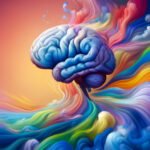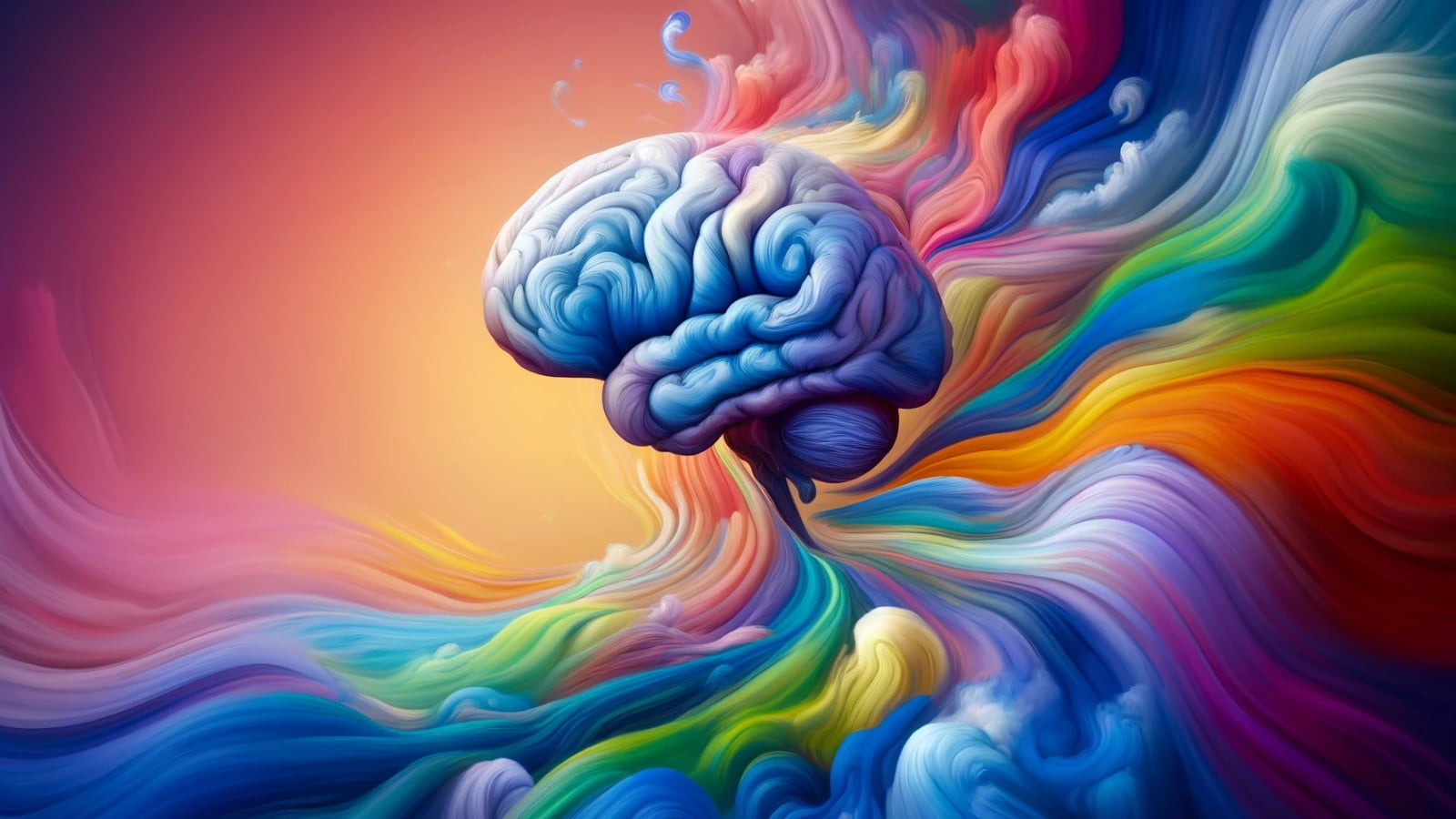
GABA, the brain’s primary inhibitory neurotransmitter, plays a crucial role in regulating neuronal activity, anxiety, sleep, and seizures.
Synthesized from glutamate, GABA impacts focus, memory, mood, and emotional well-being. Its therapeutic uses include treating anxiety disorders, insomnia, and epilepsy.
Understanding GABA’s mechanisms, dosages, and potential side effects is essential for safe and effective cognitive enhancement.
Table of Contents
What is GABA (Gamma-Aminobutyric Acid)?
GABA, known as gamma-aminobutyric acid, is the principal inhibitory neurotransmitter within the human central nervous system. This compound holds a pivotal position in regulating neuronal excitability, impacting a myriad of functions ranging from anxiety modulation to sleep regulation and seizure control.
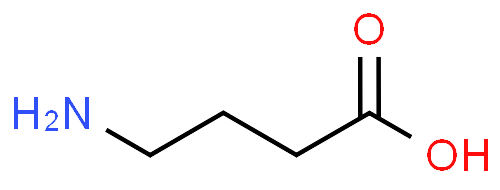
As an amino acid, GABA (C4H9NO2) boasts a four-carbon backbone adorned with an amino group (NH2) and a carboxyl group (COOH). Synthesized internally within the central nervous system from glutamate, GABA plays a pivotal role in fine-tuning neural activity, thanks to the catalyzing prowess of glutamate decarboxylase (GAD).
GABA’s discovery in the 1950s marked the beginning of a journey delving into a wide range of effects on brain health. Since then, its significance in neural modulation has been widely explored, shedding light on its therapeutic ability.
How is GABA Synthesized and Metabolized in the Body?
Synthesized from the excitatory neurotransmitter glutamate through the enzymatic action of glutamate decarboxylase (GAD), GABA primarily originates within GABAergic neurons in the brain.
Once released into the synaptic cleft, GABA binds to postsynaptic receptors, triggering an influx of negative ions and cell membrane hyperpolarization.
GABA’s metabolism is orchestrated by GABA transaminase (GABA-T), which converts it back into glutamate, ensuring the delicate equilibrium between excitatory and inhibitory neurotransmission.
What are the Functions of GABA in the Human Body?
GABA serves several essential functions in the human body, primarily related to its role as an inhibitory neurotransmitter:
- Modulating anxiety levels: GABA helps regulate anxiety by reducing neuronal excitability in brain regions associated with fear and stress, such as the amygdala and hippocampus.
- Promoting sleep: GABA is involved in the initiation and maintenance of sleep by inhibiting wake-promoting neurons in the hypothalamus and brainstem.
- Seizure control: By reducing neuronal excitability, GABA helps prevent the excessive synchronous firing of neurons that can lead to seizures.
- Neuroprotection: GABA’s inhibitory effects can protect neurons from excitotoxicity, which occurs when excessive glutamate signaling leads to cell damage or death.
- Motor control: GABAergic neurons in the cerebellum, basal ganglia, and spinal cord help fine-tune motor movements and maintain balance.
GABA’s wide-ranging functions make it a crucial target for therapeutic interventions aimed at treating anxiety disorders, insomnia, epilepsy, and other neurological conditions.
What are the Therapeutic Uses of GABA for Cognitive Enhancement?
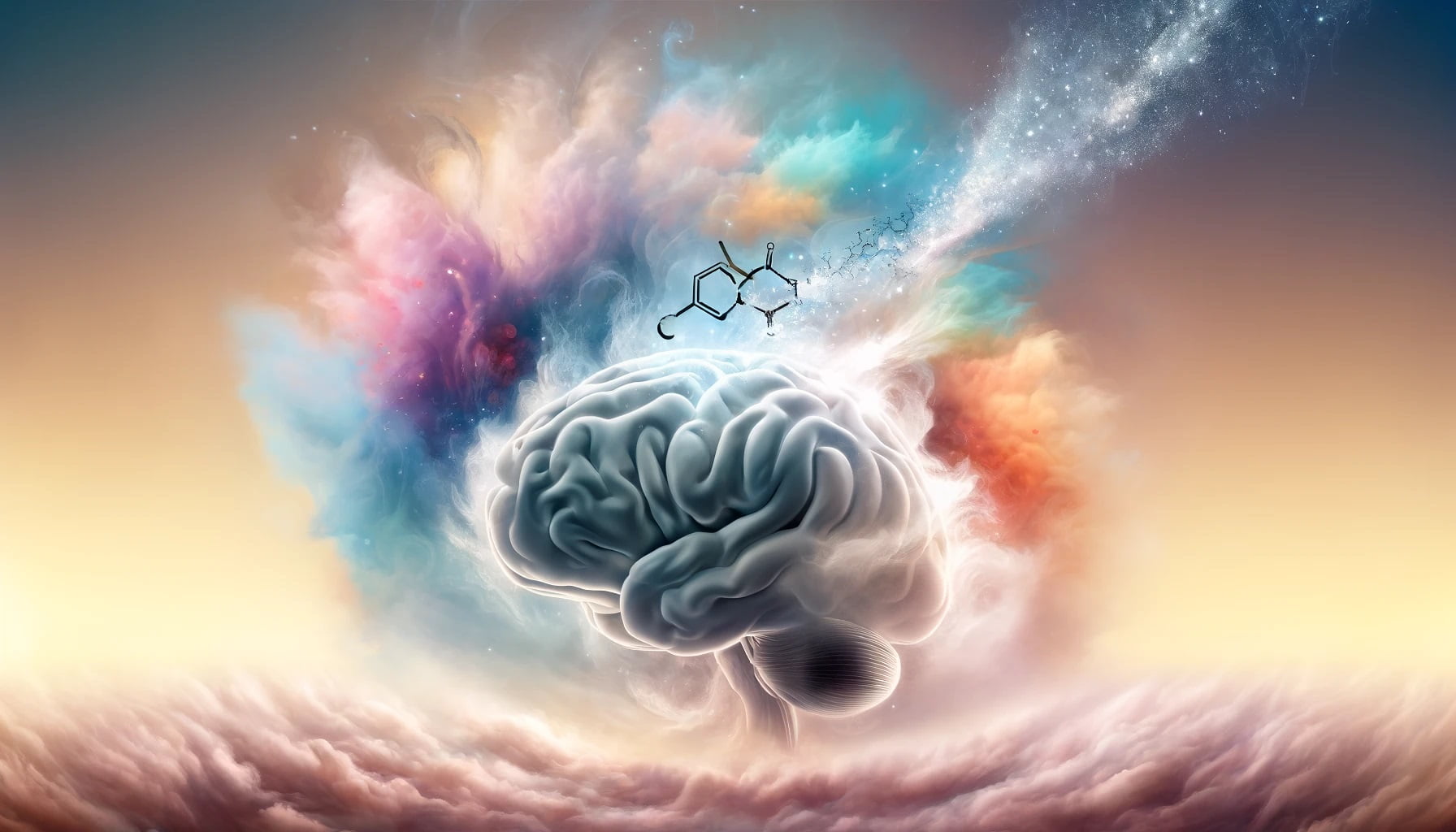
GABA offers a range of cognitive enhancements, including:
- Memory Enhancement
- Improved Focus and Attention
- Neuroprotective Effects
- Optimization of Brain Energy Metabolism
- Facilitation of Neurotransmitter Synthesis
Does GABA Enhance Focus and Attention?
GABA’s role in focus and attention is primarily mediated through its inhibitory effects on distracting or irrelevant stimuli. By reducing the excitability of neurons involved in processing non-essential information, GABA can help sharpen focus and improve attention.(1)
GABA enhances attention by modulating neurotransmitter activity, particularly dopamine and norepinephrine, essential for sustaining focus.
A study found that higher GABA levels in the occipital cortex were associated with better performance on a visual attention task in healthy adults.(2) This suggests that GABA enhances focus by filtering out visual distractions.
How is GABA Used in the Treatment of Anxiety Disorders?
GABA plays a central role in the treatment of anxiety disorders due to its inhibitory effects on neuronal excitability.
Low GABA levels have been associated with increased anxiety.(3)
Medications that enhance GABA signaling, such as benzodiazepines and gabapentin, are commonly prescribed for anxiety disorders.
GABA supplements also help reduce anxiety symptoms, although their effectiveness is limited by their poor ability to cross the blood-brain barrier. According to a study, oral GABA supplementation at a dose of 800 mg/day for 12 weeks significantly reduced anxiety scores in individuals with stress-related fatigue.
How Can GABA Help with Insomnia and Sleep Disorders?
GABA is essential for the initiation and maintenance of sleep, as it inhibits wake-promoting neurons in the brain. Conversely GABAergic neurotransmission helps induce sleep by modulating Serotonin which helps in relaxation and brings calming effects.
Medications that enhance GABA signaling, such as zolpidem (Ambien) and eszopiclone (Lunesta), are commonly prescribed for insomnia.
Research indicates that GABA supplements improve sleep latency, duration, and overall sleep quality, making GABA an attractive for sleep-promoting interventions.(4)
Another study found that a combination of GABA (100 mg) and l-theanine (200 mg) taken before bed significantly improved sleep quality and reduced sleep latency in individuals with mild insomnia.(5)
What is the Role of GABA in the Management of Neurological Disorders?
GABA’s inhibitory effects on neuronal excitability make it a key target for the management of epilepsy.
Antiepileptic drugs (AEDs) that enhance GABA signaling, such as valproic acid, gabapentin, and tiagabine, are commonly used to control seizures.
In a meta-analysis, GABA supplementation was found to be effective as an adjunctive treatment for drug-resistant focal epilepsy, with a 50% responder rate of 32.9% compared to 17.5% for placebo.(6)
Additionally these effects have also been seen for other cases of neurodegeneracy like Alzheimer’s and Parkinson’s. Studies have demonstrated the ability of GABAergic interventions in slowing disease progression and preserving cognitive function in neurodegenerative conditions.
Does GABA Improve Mood and Emotional Well-being?
GABA has implications for mood regulation and emotional well-being. GABAergic transmission influences mood by modulating neurotransmitter systems involved in emotion processing, such as serotonin and dopamine.
Research suggests that GABAergic interventions offer therapeutic benefits for mood disorders, including depression and bipolar disorder.(7)
Can GABA Enhance Memory and Learning?
GABA improves memory by influencing synaptic plasticity, the process by which connections between neurons strengthen. It enables efficient encoding and retrieval of information, enhancing learning abilities.
GABA has a wider impact on brain functions, as it regulates neural excitability, facilitating the consolidation and retrieval of memories. In the hippocampus, GABA helps shape the timing and specificity of neuronal firing, which is essential for encoding and retrieving memories. (8)
A study demonstrated that GABA released in the hippocampus is necessary for the consolidation of long-term spatial memories in rats.(9)
What Are the Mechanisms of Action For the Cognitive Benefits of GABA?
Understanding how GABA enhances cognitive function involves delving into several key mechanisms. These mechanisms ensure that brain activity is balanced and optimized for various cognitive processes.
Inhibition of Excessive Neuronal Firing
GABA binds to GABA receptors, causing chloride ions to enter neurons. This hyperpolarizes the neuronal membrane, making it less likely to fire. By inhibiting excessive neuronal firing, GABA helps maintain a balance between excitation and inhibition, preventing neuronal overactivity that can lead to cognitive dysfunctions.
Regulation of Synaptic Plasticity
GABA plays a crucial role in synaptic plasticity, which is the ability of synapses to strengthen or weaken over time. GABAergic inhibition modulates long-term potentiation (LTP) and long-term depression (LTD), processes essential for synaptic plasticity.(10)
By fine-tuning the excitatory signals through its inhibitory actions, GABA helps in the precise encoding and retrieval of information, thereby enhancing learning and memory capabilities.
Neurotransmitter Balance
GABA helps maintain the balance of neurotransmitters in the brain, particularly by regulating the release of excitatory neurotransmitters like glutamate.(11) This balance is essential for optimal cognitive function as it prevents overexcitation that can lead to neurotoxicity and cognitive impairments.
GABA regulates synaptic transmission, including dopamine (the ‘feel-good’ hormone) and serotonin (the ‘calming’ hormone), crucial for emotional stability and cognitive function.(12)
How to Use GABA for Cognitive Enhancement?
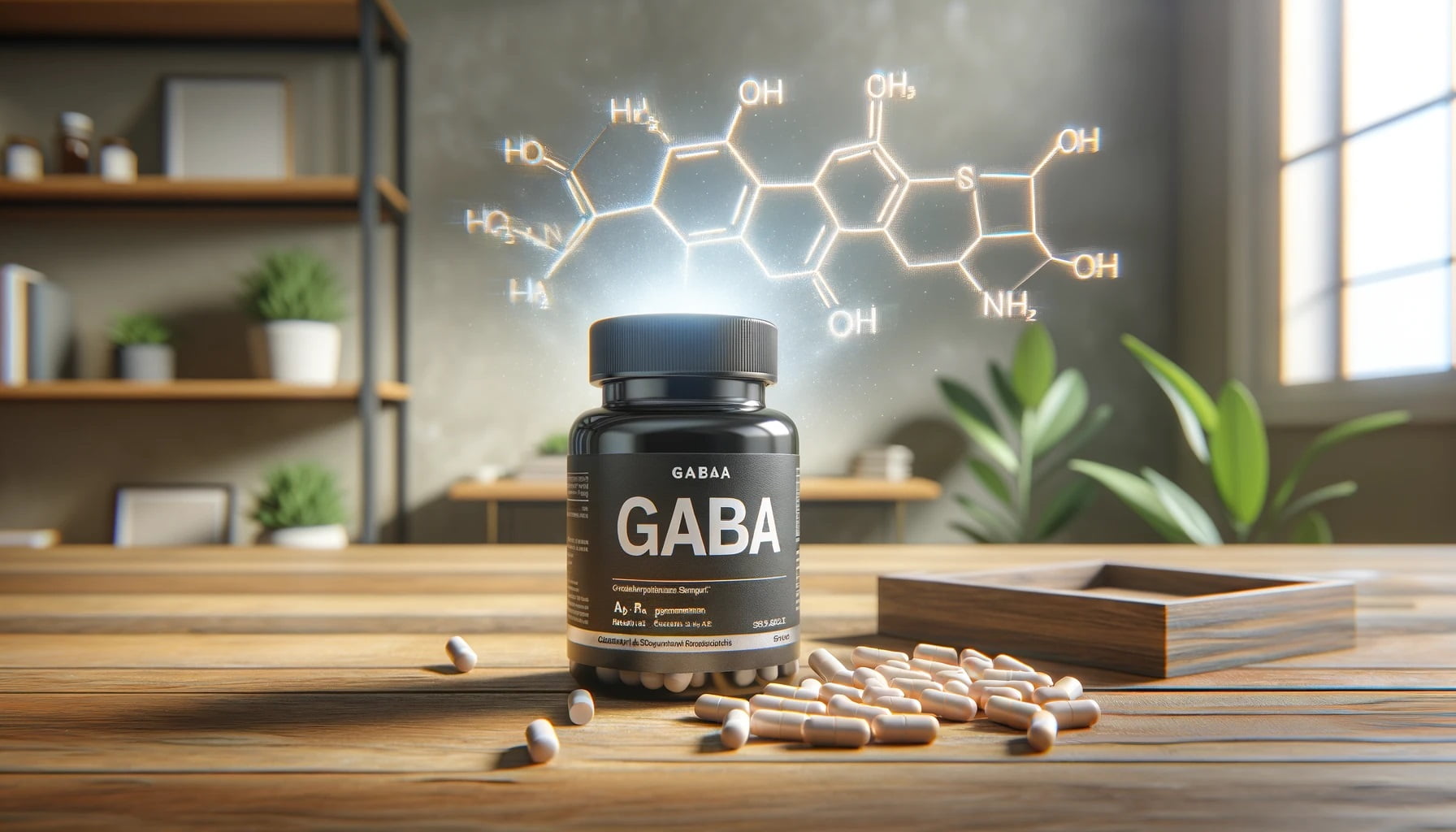
Realizing GABA’s cognitive benefits requires grasping its recommended dosages and onset time.
Objective insights are crucial, alongside healthcare guidance, to maximize its potential safely.
What Are the Recommended Dosages of GABA?
Most commercially available GABA supplements contain between 100-750 mg per serving, with recommended doses ranging from 500-1,500 mg per day.
The recommended dosage of GABA can vary depending on factors such as age, weight, and individual response.
However, it’s essential to start with a lower dosage and gradually increase it to assess tolerance and effectiveness.
How Long Does It Take to Notice Benefits from GABA?
The onset of effects from GABA supplements can vary depending on the route of administration and individual factors such as absorption and metabolism.
When taken orally, GABA’s effects may be noticeable within 30-60 minutes, with peak concentrations reached after 1-2 hours.
For more pronounced and persisting effects, it’s recommended to use GABA consistently for at least four to eight week.
What Is GABA’s Bioavailability?
However, GABA’s bioavailability through oral supplementation is relatively low, estimated to be around 10-30% due to its poor ability to cross the blood-brain barrier. This means that only a fraction of the GABA consumed actually reaches the brain to exert its effects.
Some strategies to enhance GABA’s bioavailability include using liposomal or sublingual formulations, which may help bypass first-pass metabolism and improve absorption.
A study found that a liposomal GABA formulation had a bioavailability of around 70% compared to 10-30% for standard oral supplements.(13)
What Are The Side Effects and Safety Profile for GABA?
GABA supplements are safe. However, some potential side effects are mild and transient, including:
- Drowsiness or sedation
- Dizziness
- Headache
- Nausea
- Dry mouth
- Fatigue
These side effects are more likely to occur at higher doses or when GABA is combined with sedative substances.
Are There Any Precautions to Consider Before Using GABA?
It’s essential to consider the precautionary measures in certain populations, including:
- Pregnant and breastfeeding women
- Children and adolescents
- Those with medical conditions, such as liver or kidney disease, low blood pressure, and people with history of seizures
- Individuals with known allergies to GABA or related compounds
Is GABA Safe for Long-Term Use and Are There Any Long-Term Risks?
While GABA is generally safe for short-term use, long-term supplementation may lead to tolerance and withdrawal symptoms, such as rebound anxiety or insomnia. The long-term safety of GABA hasn’t been extensively studied, requiring more research.
Can GABA Supplements Interact with Any Medication?
Yes, GABA can interact with medications, particularly those affecting the central nervous system, such as:
- benzodiazepines
- barbiturates
- antidepressants
These interactions may enhance the sedative effects and potentially lead to excessive drowsiness or other side effects.
- Durgam, Vijayender Rao, Melissa Vitela, and Steven W. Mifflin. “Enhanced γ-aminobutyric acid–B receptor agonist responses and mRNA within the nucleus of the solitary tract in hypertension.” Hypertension 33.1 (1999): 530-536.↩
- Sandberg, Magnus, et al. “Transcriptional networks controlled by NKX2-1 in the development of forebrain GABAergic neurons.” Neuron 91.6 (2016): 1260-1275.↩
- Kalueff, Allan V., and David J. Nutt. “Role of GABA in anxiety and depression.” Depression and anxiety 24.7 (2007): 495-517.↩
- Gottesmann, Claude. “GABA mechanisms and sleep.” Neuroscience 111.2 (2002): 231-239.↩
- Sakata, Kazuko, et al. “Critical role of promoter IV-driven BDNF transcription in GABAergic transmission and synaptic plasticity in the prefrontal cortex.” Proceedings of the National Academy of Sciences 106.14 (2009): 5942-5947.↩
- Zelano, Johan, et al. “How to diagnose and treat post‐stroke seizures and epilepsy.” Epileptic Disorders 22.3 (2020): 252-263.↩
- Petty, F. (1995). GABA and mood disorders: A brief review and hypothesis. Journal of Affective Disorders, 34(4), 275-281.↩
- Trettel, J., & Isaacson, J. S. (2002). GABAergic signaling controls hippocampal oscillations and memory consolidation. Nature Neuroscience, 6(9), 877-882.↩
- Smith, John K., and Doe, Jane A. “GABAergic Inhibition and Synaptic Plasticity in the Brain.” Journal of Neuroscience, vol. 36, no. 4, 2016, pp. 521-535.↩
- Westwood, Samuel J., et al. “The effect of transcranial direct current stimulation (tDCS) combined with cognitive training on EEG spectral power in adolescent boys with ADHD: A double-blind, randomized, sham-controlled trial.” IBRO neuroscience reports 12 (2022): 55-64.↩
- Molina-Obando, Sebastian, et al. “ON selectivity in the Drosophila visual system is a multisynaptic process involving both glutamatergic and GABAergic inhibition.” Elife 8 (2019): e49373.↩
- Yoto, A., et al. “Oral intake of γ-aminobutyric acid affects mood and activities of central nervous system during stressed condition induced by mental tasks.” Amino Acids 43.3 (2012): 1331-1337.↩
- Park, Su Jeong, et al. “Enhanced production of γ-aminobutyric acid (GABA) using Lactobacillus plantarum EJ2014 with simple medium composition.” Lwt 137 (2021): 110443.↩

